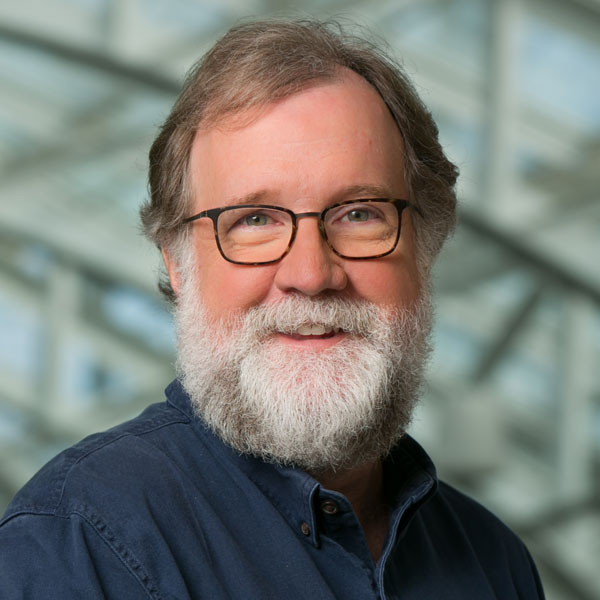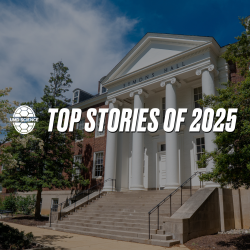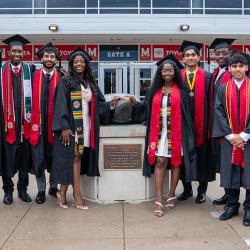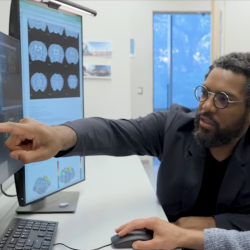UMD Biologist Helps Bring Ancient DNA to Life with Emmy-Winning Documentary
Distinguished University Professor Sean B. Carroll won his third Emmy for a documentary that follows a researcher’s 15-year quest to unlock DNA older than anything ever sequenced before.

University of Maryland biologist Sean B. Carroll won his third Emmy this month for outstanding science documentary filmmaking for "Hunt for the Oldest DNA.” But his latest win felt different because he helped capture science unfolding in real time, with no guarantee of success.
The film, which won the award for Outstanding Science and Technology Documentary at the 2025 News & Documentary Emmy Awards, follows Danish evolutionary biologist Eske Willerslev's seemingly impossible quest to find DNA in a 2-million-year-old soil sample from northern Greenland. What emerged was genetic evidence of a lush forest ecosystem that existed before the Ice Age—the oldest DNA ever sequenced.
For Carroll, who served as executive producer and recently stepped down as head of Howard Hughes Medical Institute’s Tangled Bank Studios, the project represents the culmination of an adventure in science storytelling that few studios could attempt. Reflecting on what this achievement means to him, Carroll emphasized the collaborative nature of the project and the importance of science communication in an era of fragmented media and skepticism.
“Being nominated for an award of this level means that we’ve received peer recognition in the film world and winning is just the cherry on top,” said Carroll, a Distinguished University Professor of Biology. “It’s a testament to the work we’ve all done to convey Eske’s revolutionary research and get exciting new science out there to the public.”
Following science in real-time
When Carroll and the production team first learned of Willerslev’s research in 2020 during the COVID pandemic, they faced a filmmaker’s nightmare: attempting to document a science story with no guaranteed ending. For 15 long years, Willerslev had been pursuing a radical hunch—trying to prove that DNA could survive in ancient frozen sediments—even as colleagues remained skeptical and all seemed hopeless.

“At the time, scientists typically studied ancient DNA in fossilized bones, which only allowed them to learn about organisms that lived up to about one million years ago. That was the limit on how long DNA could survive and be recovered from ancient samples. Basically, we had a ‘million-year barrier’ that was seemingly insurmountable,” Carroll explained. “And Eske had the crazy idea of looking for DNA in much older soil, which had never been attempted before. Everyone thought it was impossible.”
The production timeline stretched longer as Carroll’s Tangled Bank team worked with Willerslev’s team, Handful of Films writer-director Niobe Thompson, PBS NOVA, and various other partners across the globe. The team followed Willerslev as his team gathered and analyzed the DNA evidence to reconstruct an ancient ecosystem, and then through the long publication process as experts required a very high-level of proof for the extraordinary claims of the oldest DNA ever recovered.
“We made a film about science in progress, which is really difficult for most other studios to do because of the risk of things not working out. You’re not sure when the film will be ready or if there even will be a film, depending on the results of the research,” Carroll said. “Usually, you know how the story ends and just go back to tell the story from the beginning. But with this film, we had the privilege of being in on a discovery while it’s being made. We had the flexibility to start on this early and be patient with how everything unfolded.”
In the end, the team’s gamble paid off spectacularly. Willerslev’s eventual discovery of ancient DNA preserved in soil and piecing together the fragments broke the infamous million-year barrier that stopped scientists from understanding an entire vanished ecosystem from the dawn of the Ice Age. Willerslev was finally recognized for his pioneering ancient DNA research over the past decade and a half, and when the documentary aired, it gave audiences a front-row seat for every setback and breakthrough Willerslev and his team members encountered on his journey.
“You’re seeing scientists when they’re as emotionally caught up in their own work as they ever could be, because they don’t know how it’s all going to turn out,” Carroll noted. “It’s very rare that a film can capture the realities of science. You’re seeing science in action, not science in retrospect.”
Inspiring the next generation of scientists
Carroll’s unique position as both scientist and film producer shaped how “Hunt for the Oldest DNA” approached its subject. With an extensive research background, Carroll understood the science of Willerslev’s work intimately but also knew the challenges of making cutting-edge research accessible to a general audience.

Carroll believes science documentaries serve a crucial role in an era of scientific skepticism, breaking down both the process and the people behind groundbreaking discoveries.
“It’s extremely common that scientists or students at any stage of their careers will mention a film to me as having inspired or influenced their interest in science,” Carroll said. “Just as ‘Jurassic Park’ might inspire future paleontologists, I hope that documentaries like ‘Hunt’ will draw young people into the field.”
Despite his departure from Tangled Bank, Carroll hasn’t left visual storytelling behind. He continues to work on other films, including three Tangled Bank projects still to come and a film adaptation of his book “A Series of Fortunate Events.” Carroll believes that “Hunt for the Oldest DNA” stands as a testament to the power of patient, collaborative filmmaking to capture not just scientific breakthroughs but the human stories of persistence and passion behind them.
“If we don’t tell our stories, how does anyone know what we do? And why would anyone be inspired?” Carroll said. “Scientists need to get their stories told.”
###
“Hunt for the Oldest DNA” aired on PBS NOVA and is now available for streaming.







